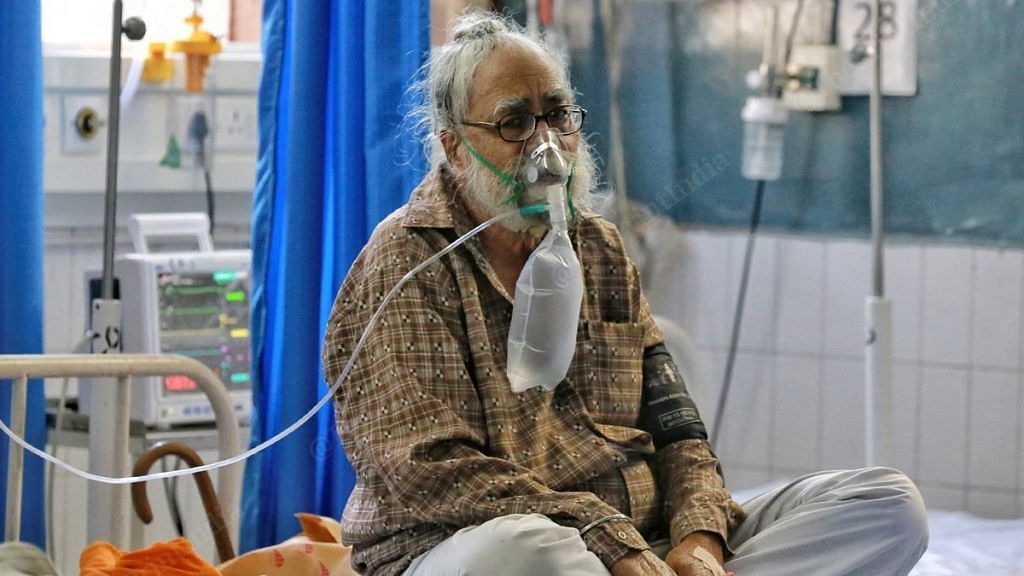A volleyball between the Narendra Modi-led government at the Centre and the states, between political incentives and health concerns, is leading to the loss of countless Indian lives in the intense second wave of the Covid-19 pandemic. Who is accountable for what and when is getting increasingly muddy. Public health is a state subject in India. Yet, there are elements of public health that have been led and managed by the central government. With a lack of policy clarity, transparency, and accountability between the Centre and states, India’s pandemic response has suffered. Where does the administrative and moral responsibility of this crisis rest?
As the vaccine supplier to the world, India hoped to provide Covid vaccines to several other countries. It is instead struggling to vaccinate its own population; currently facing an enormous supply gap. While the Centre has been controlling procurement and supply for the last several months, procurement has recently been liberalised, with states and private entities now allowed to buy vaccines directly. Some have lauded the move, because some states were previously not getting enough supply. But it’s worth examining where the solutions to the constrained supply really lie, what we are solving with decentralised procurement, and what new challenges might emerge.
Also read: Why global vaccine crisis is a test of capitalism
Breakdown of Centre-state relations
The central government rightly controlled procurement of vaccines because public health responses (such as vaccination, especially in this context of positive externalities) are amenable to market failures. No other country in the world has allowed market forces to control this. Especially in a federal context, this may likely lead to increased inequities across and within states.
Not only has the price of the vaccine been increased for states — from Rs 150 per dose to Rs 400 in the case of Covishield — but the states are now required to fund this themselves. It is also unclear why the Centre and states are paying differential prices.
With variable fiscal contexts and vulnerabilities across states, is there not a real concern of this policy leading to inter-state inequities in access to the vaccine; if some states do not have the resources to purchase, or if inter-state competition for procurement results in some procuring more than their requirements (not unlike the situation at the global level across high-income and low-income countries)?
If states charge citizens for the current vaccines, or purchase higher priced vaccines like Pfizer and Moderna, intra-state inequities could be a distinct possibility. With strong positive externalities for the vaccines, can India afford such inequities, both from an individual and societal perspective?
There was a reason why procurement was centrally controlled. Historically, vaccines have been provided by the central government to states in a reasonably smooth manner, without concerns of competitive federalism. This was usually accompanied with a clear and transparent criterion for distribution across states. Similarly, the Covid-19 vaccination was planned as a centrally controlled task to ensure access to the country’s entire population; much like previous vaccinations and like other countries have done.
Unlike previous vaccinations, however, the lack of a transparent mechanism through which vaccines were being distributed across states, and the slow run rate in vaccination, led to some states expressing strong concern about the lack of adequate supply, and asking for greater autonomy in procurement; some of this a result of an erosion of trust between the Centre and the state. The challenge, however, was less about state autonomy, but more about the gaps in assessment and planning in the first place, resulting in inadequate supplies. The gaps in initial procurement commitments, advance purchase agreements, in the absence of which manufacturing capacity was perhaps not expanded to the required levels, contributed to current supply gaps.
At this critical juncture, however, does ensuring vaccination for India’s population no longer remain the responsibility of the central government, with the states having inherited a precarious situation, the outcome of which they may be accountable for?
Also read: The oxygen story exposes how India breathed too easy between the two Covid waves
Oxygen crisis
The scarcity of oxygen has taken many lives, but no one seems to be in charge, pushing a private hospital to file a case in the Delhi High Court over the lack of oxygen supply. It may be argued that this is the responsibility of states and private hospitals, which indeed it is. But isn’t the role of the Centre, especially during a national emergency, to prioritise national needs, take over planning, and enable inter-state coordination over life-saving resources?
As the steward for health in the entire country, the central government is well positioned to play a coordinating role across states, just as global mechanisms attempt to do the same across countries, specially for public health. A role that ensures that vaccines and oxygen — critical public health — reach all those who need it. The Centre is well positioned to undertake periodic planning and intervene, in collaboration with the states, to develop transparent mechanisms for distribution of vaccines to each state, rather than leave it to the market to determine who gets what. It would be more than unfortunate if state-level fiscal and capacity challenges, along with politics, are allowed to impact the safety and survival of our population.
The author is a Fellow, Lancet Commission for Reimagining India’s Health system. Views are personal.
